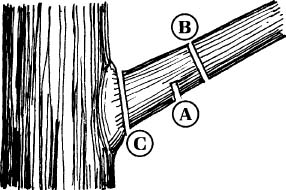Pruning fruit trees can be tricky. This blog provides tricks that make pruning less complicated. Of course, calling Ostvig Tree Care is always an option too.
Tools You Need for Tree Pruning
- Use Clean, sharp tools.
- Sanitize your tools in between pruning different trees.
Tree Pruning Tutorial
- Start by removing weak, crossing, rubbing, dead, diseased, damaged and dying branches.
- Shorten the previous year’s growth on each main branch (primary) by about one third to a bud facing in the required direction. This will encourage the development of new branches and spurs and maintain a good shape
- Leave young laterals (side-shoots) unpruned so they can develop fruit buds in the second year and only remove the young laterals if they are crossing or if the growth is too crowded (i.e. growing closer than 10-15cm (4-6in) at the base).
- Always cut to a bud, lateral branch, or main trunk.
- When pruning back to a main stem or another branch, do not make a flush cut, instead make a cut to the raised branch collar. The collar contains chemicals that are a barrier against pathogens and help the tree form a callous over the wound.
- If a tip – or partial tip-bearer, cut back a proportion of older fruited branches to a strong younger shoot positioned closer to the to the main trunk/higher up the branch. This will reduce congestion and prevent branches becoming overlong.
- Do not leave stubs.
Pruning Large Limbs or Strong Shoots
Use the three-cut method for large limbs which are more than two inches in diameter. Remove strong shoots (greater than 15cm (6in) long) growing towards the center of the tree.

Image from the Arbor Day Foundation
Pruning Aging Trees
Remove/thin out any spur systems that have become congested. Where thinning or removal is required, remove spurs on the underside of the braches, where the developing fruit will not receive enough light, and produces inferior fruit.







